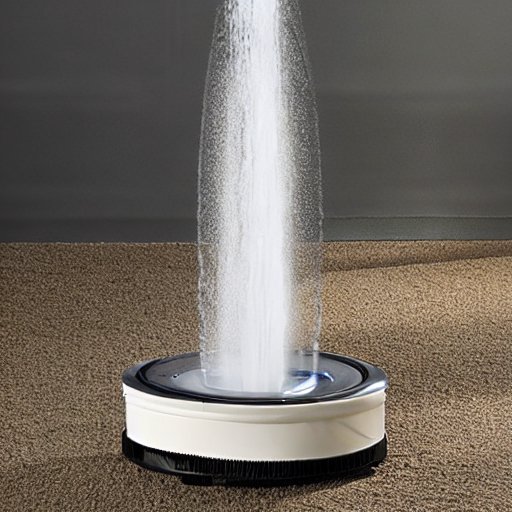Might be a local thing, but in the US I feel like all the similar radio stations go on commercial break all at the same time. Is this just an iheartradio monopoly thing or is it some odd coincidence due to standard ad deals?
After a lot of thinking I purchased an external antenna, a radio transciever and a QRM remover to listen to foreign radios from Peru, Bolivia, Uruguay, Argentina and somewhere from the Carribean sometimes depending on the weather… Those are not corrupted… Every town or local radio are concentrating their efforts to get any money that not evolves curating good tunes. Hope you find a suitable radio station for you somewhere in the air or in the web.
In general, it is my understanding that most radio stations want to have something happen every fifteen minutes (at least), which is to say that it’s very likely for stations to take their commercial breaks around the same time.
iHeart owned stations just play a fuckton of commercials, period. But there is also a requirement to play the station’s call sign every so often, and they usually throw in commercials along with it.
Some breaks are mandated by the FCC for station identification. These “Hard Breaks” are at the same time on all stations.
My brother was a DJ in the 90s and this was the case for them. They had a pretty rigid schedule that required certain things at certain times and I don’t think even the station owner could do much to deviate from it. If memory serves, it was the FCC, some of their music and content providers, and state/local regs all requiring various things be done daily, hourly, weekly, etc.
Obviously things could be very different now, and I would guess there are some slight regional differences.
frequency (the time between them) of station id are mandated, i don’t think the exact times of them are.
the real reason they all seem to go on ‘break’ at the same time is there’s only a few companies that own most the radio stations. they aren’t dummies. they know if they all go on breaks at about the same time, then people switching stations still land on ads… and it might still be theirs.
I don’t know the specifics of commercial broadcast radio, but I know with ham radio hams are required to identify every 10 minutes while they’re transmitting including automated repeaters that will usually do it in Morse code
If you listen to some ham radio communications (sometimes it’s interesting, but usually it’s just old guys talking about antennas) every 10 minutes the repeater will beep out a bunch of Morse code and everyone rattles off their call signs
For commercial radio I think it’s every hour so at least that often they’ll have to cut to “you’re listening to WXYZ 99.9 FM blah blah blah” which also provides a good segue to a commercial break.
I’m sure most of them probably just schedule that at the top of the hour to make it easy for themselves
How do I get into HAM radio cheaply and legally?
- Study free materials available online.
- Take free practice tests.
- Look for license exams in your area, or take an online one. Exam fees in my experience have been ~$25 and go towards whichever club is proctoring.
- Pay the $35 FCC licensing fee and get your callsign.
Theoretically, that’s all you need. It’s possible to use certain internet linked amateur transmitters for no cost as long as you have a valid callsign. However, I promise it’s a lot more fun with a real transceiver. You can buy a bare minimum, highly hackable handheld VHF/UHF transceiver for as little as $20.
Or you can slowly give your soul to the moneypit of HF equipment…
Laws and regulations will vary a bit depending on what country you live in, but assuming you’re in the US the process is pretty simple but involves some studying
Pass the test, buy a radio, start talking.
There’s 3 classes of license- technician, general, and extra that give you permission to use different bands and modes, extra of course gives you the most options, technician the fewest. If you pass your technician exam you can usually go ahead and take your general exam right then and there, and if you pass that you can go ahead and get extra all in the same sitting.
Finding somewhere to take the test is the tricky part, but if you look up amateur radio clubs in your area they probably have it published somewhere and I think the ARRL website has a list of places/clubs that do it and when. I think some of them have started offering an online test since covid but I don’t really know how that works.
There’s a license/test fee, don’t remember what that is off the top of my head, I want to say around $40 but don’t quote me.
As far as studying, there’s a lot of resources out there, apps, reference books, the FCC publishes the question pool they use for the test, etc.
As far as radios, you can get a baofeng handheld for like $20 on Amazon, a lot of hams give them shit but they probably also have one or two kicking around because they’re so cheap. They don’t have a lot of bells and whistles but they’re probably the cheapest way to just start talking to other hams.
Radios get expensive quick, that’s one of the reasons I haven’t gotten too into it, I have better things to drop hundreds or thousands of dollars on, but you can find some good deals on used equipment, ebay, flea markets, etc.
Start with a baofeng, talk to other hams, maybe go to club meetings or events, figure out what else you want to do and go from there.
Also ham is not an acronym, no need to capitalize, I believe the consensus is that it originated because amateur radio operators were more ham-fisted in their radio usage than professional radio operators so they started calling them hams.
Can I buy a radio and use it to receive without a license?
Yeah, listening is totally allowed, just don’t transmit without a license. Depending on the radio there’s often a way to lock out the PTT button so you don’t accidentally key up.
Programming the radio can sometimes be a bit of a pain in the ass, CHIRP is a free program that’s often recommended for baofengs, you’ll also need to figure out what repeaters are in your area so you know what frequencies to listen to
Some baofangs even are sold with the ability to transmit locked out for ham frequencies now. They can still transmit in the frequencies that normal walkie talkies operate on though. I think they started using btech as the brand for the ham radio ones are now.
Was annoyed when I accidentally bought a few of those. But they’re only like $17.
I got a UV-5R, is that one of the locked down ones?
I feel like the old guys in my area just talk about their health problems 😂
Something to look forward to, I suppose
Hotelling’s law
We estimate we can sell up to 80% of airtime before inducing seizures.
Relevant video https://www.youtube.com/watch?v=KpPE85Jogjw
Radio ads were why I switched to Spotify years ago. Though when Spotifys ads started being a little more intrusive I switched to Plex and Plexamp. My next switch may be jellyfin and Finamp.
There’s a way to remove ads from the music streaming app (on Android or any platform that can emulate it) using Xmanager
A lot of them are owned by the same companies. And they want engagement with their ads.
They base their broadcast around hourly cycles put onto this day’s frame, let’s say it’s a 12h circle like on analogue clocks, or a pizza. Each cycle starts with a jingle and ad, so you can divide it into equal 12 parts and eat a 5-minute slice from each. Then you have standardized blocks to peg into them, e.g. 2-3-minutes songs, ads, news blocks, longer blocks to occupy the whole hour like Car talks with Martok etc. Some of them (news, ads, jingles) repeat every hour or two making it trivial. There’s not many ways to slice this pizza, so many of their plans naturally overlap. Iirc on music stations it’s performed-semi automatically now, the machine can compile a plan to fit pieces from your music library and other components by itself.
I would love an hour long radio show with Martok.
I’m just speculating here… but suppose a station were deliberately out of phase with most other stations. When other stations go on break, frustrated listeners would search for different stations and find the out-of-phase one. They’d listen to that station until its next commercial break, at which point they’d repeat the process and return to their previous stations. The out-of-phase station would get a reputation as the station for listeners who always change stations at ad breaks, which would make it impossible for that station to find advertisers.
My local public radio stations were often out of phase. Makes sense, not really relying on advertisers the same way.
All stations, TV and radio, get huge amounts of money from advertising. So they maximize commercial time to maximize revenue. Hence all stations go to commercial breaks around the same time. It’s a formula. If you look at TV shows from the mid 80’s and early 90’s, you’ll see 2 commercial breaks per half hour. Now you see 3 breaks per half hour and about every 7 minutes during hour-long shows. These same rules apply to radio, however they don’t really have “shows” anymore. Just hour long segments interrupted by ads about every 3 songs.
Probably a bit of both. Stations change personnel every few hours, typically on the hour. Depending on the programming, that may be more or less likely to be a commercial break.
Marketing research probably has strong indicators for when the most people get in their cars or turn on the radio at home. And they know that people tend to change the channel until they find music, and then are much less likely to change it during their commute. If your competition is on commercials, you can either also go to commercial, or you can try to steal those listeners with content.
I don’t know how common it is now, but I know stations used to have syndicated programming as well, so they would have a local DJ or prerecorded local identifyer between songs or other content, and then the content would come from a regional or national feed. I know PBS works this way, because there are places where you can tune into different public stations and hear the same content. But to do that, you would want standardized, predictable commercial timeslots. Modern network communications and automation could probably eliminate that need, though.
And of course there’s always coincidence. You remember the times when you happen to flip through stations and hear only commercials, but you quickly forget the times when you only have to change one station. You don’t even know how often every station you’re not listening to will go to commercials while you’re listening to music. So there is a significant confirmation bias.
Because 90% of American Media is owned by only like six corporations. Radio stations a lot of times are owned by clear channel they all have a very similar programming structure.
Clear Channel being the big bad is the key.
Welcome to corporate conglomerates and enshitification.
Anti-consumer antitrust stances enables this to happen.
Copy pasted stations with a 20 song playlist by decade, and if your lucky, weather.
they’re almost all owned by the same parent network (iheartmedia, which was clearchannel) so it’s stupid easy to coordinate
I remember always switching to another channel when ads came up, but later that became impossible because they all started ads at the same time. So it seems to be on purpose to prevent people from switching channels. This was in the Netherlands, though I haven’t listened to radio anymore since Napster came out.
A buddy had an idea for 2 radio stations that were 30 minutes of the same music and 30 minutes of ads, but flipping the times.
Problem with that is that you need advertisers to buy into that idea too… And I don’t think anyone’s gonna say “ah yeah for sure they’ll listen to my ad” if it’s in a 30 min block.
They don’t though.
It’s just that the stations still playing “music” are playing shit.














